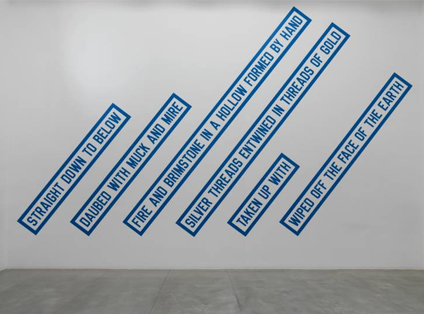It seemed a good idea at the time. That was in 1967. But has Lawrence Weiner finally served his sentence? By Andrew Graham-Dixon
Few artists can have devoted themselves as persistently and unprofitably to the repetition of a single idea as Lawrence Weiner. Weiner, who was born in New York in 1942, is not widely known outside that relatively small circle of people who visit exhibitions of contemporary art, and it would be hard to argue that he deserves to be. But he is, in his way, a fascinating figure: the creator of what may be the most extraordinarily boring works of art ever made.
Weiner's oeuvre is deeply mysterious, although this has nothing to do with the work itself, nor with the texture of the experience that it offers to the beholder. Its mystery, rather, lies in the simple fact of its existence - in the fact that a man, presumed to be sane, should have considered it worthwhile to devote his entire life to the creation of an art so manifestly and unrelievedly tedious. Weiner's career in art - that he should have wanted to pursue one, and that he has been able to do so - is one of the most intriguing riddles of modern visual culture.
Wall to Wall, at the Serpentine Gallery, is among other things an opportunity to ponder the continuing enigma of Weiner's life and work. His contribution to this group show simply consists of a text running across two walls of a room, which reads as follows:
''A ROPE (OF HEMP) + A CABLE (OF STEEL) + A THREAD (OF SILK) & BRAIDED (ALL TOGETHER)''.
This is an entirely characteristic example of Weiner's art, which consists of nothing but such short and gnomic texts presented in his preferred sanserif typeface. The texts...


